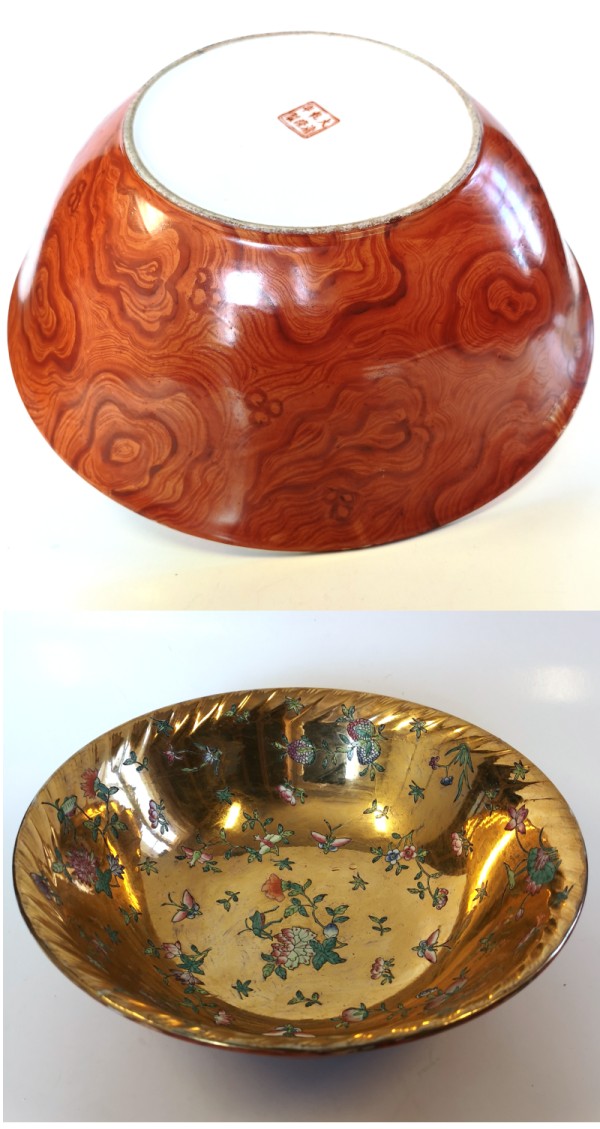
A 'Faux bois' bowl with the interior painted gold. Qianlong six character mark but 20th century. The rounded sides resting on a low foot rising to an everted rim, painted on the exterior with swirls of chest and ochre browns in imitation of wood, the interior painted gold with flowers and insects in famille rose enamels. Diameter 10 in., 25 cm. Photo: JE Nilsson Coll. 2022.
Porcelain imitating other materials. Recently a name for some of this porcelain, so-called "trompe l'œil", has gained ground in recent Chinese research, which however seems to neglect the larger picture where imitations in cheaper materials - i.e. clay - in known from at least the Han dynasty where bronze vessels was imitated in pottery with brown and green copper based lead glazes.
A case could be made for the Trompe l'œil - fool the eye - porcelain pieces that from the Yongzheng to the Qianlong period describing a special group of porcelain was made for the Imperial court, made in Jingdezhen on Imperial order to look like - imitate - other materials.
The pieces which copied vessels made of materials other than porcelain (faux or trompe l'œil) were even more remarkable: some even reproduced exactly the texture of other materials, such as enamel decorated bronze vases, wood, gold, bamboo, silk clad boxes, lacquer, marble, simulated fossilized stone and puddingstone. The genius behind this development appears to have been the supervisor of the porcelain workshops Tang Ying (1682-ca. 1755), who assembled the most skillful craftsmen and to create uniquely splendid and ingenious pieces.
Already under the Yongzheng Emperor he had held a position overseeing the palace workshops, and in 1728 he was posted to Jingdezhen to assist the then supervisor Nian Xiyao (1671-1739), whom he succeeded in 1737. In his almost thirty-year career as a supervisor of porcelain production he served both Yongzheng and Qianlong. Such were his reputation that later generations named the porcelain produced by the imperial kilns under his supervision "Tang ware". In particular this is the case of a special copper red monochrome on a faintly crackled gray ground.
Other pieces popular to reproduce under the Qianlong emperor was various glazes from the Song dynasty. The most convincing reproductions were those of the crackle-glazed Ge ware. The shapes were not confined to Song forms, but conformed to contemporary tastes.
The bluish white glazed Song dynasty porcelain called Qingbai was widely recognized as imitating jade.
The white wares of Dehua also by and large seems to have been made in imitation of ivory which is also the case with Jingdezhen white and unglazed bisque porcelain wares favoured by artists such as Wang Bin Rong, who is renowned for incised porcelains during the late Qing dynasty.
A close relative to pieces imitating other materials are pieces imitating entire objects such as sea shells, birds and fishes where there sometimes is up to the good judgment of the collector where to draw the lines for the various possible descriptions.
A